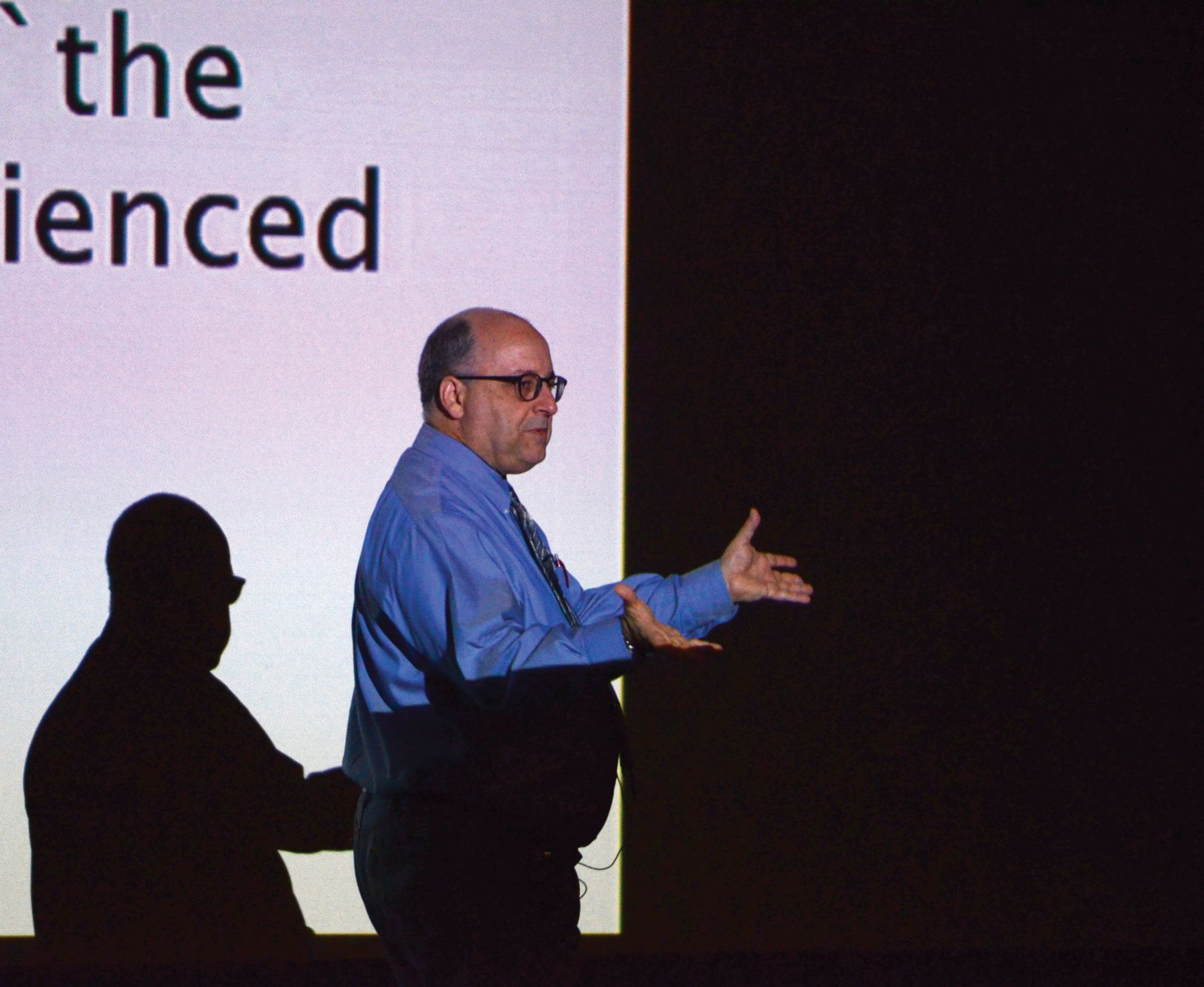The Interview
Kevin Hagopian

As a lifelong fan, teacher and researcher, Kevin Hagopian knows the power of films and storytelling. The first full teaching professor in the history of the Donald P. Bellisario College of Communications, Hagopian has been a faculty member at Penn State for 21 years. He still watches a half dozen movies a week, every week. He teaches introductory and advanced courses in cinema studies, and the Bellisario College’s graduate seminar in pedagogy. Hagopian was honored in 2016 with the Excellence in Teaching Award from the Bellisario College Alumni Soiety Board. He has been interviewed on National Public Radio and quoted as an expert by media outlets such as USA Today, Boston Globe and Chicago Tribune.
Why do you study films?
I had loved movies since I was a kid, and in college I was a theatre major and that department had the film studies classes. I discovered I had a scholarly bent because I was studying something I loved. That was really what did it for me.
Do you remember your first movie viewing experience?
I can actually recall some drive-in movies. One was Disney’s “Cinderella” and another was “How the West Was Won.” Most of my early movie viewing was done on television because movies were really cheap programming for local affiliates and independent stations. Our local PBS station also had this whole series of silent films late in the evening. Between those films, the classic studio films that I was seeing during the day and the current movies my parents were taking me to, I was getting a pretty good movie education.
At what point did it move from entertainment to education?
I don’t know that it ever has, actually. It’s more of an “also.” It’s always been, to me, an entertaining form of education. One of the gripes people around the country who teach film studies have is that students cannot imagine a film class would be difficult. Film is something students justifiably feel they already own. They’re actually already skilled movie viewers. They know the topic in a way they do not with some other disciplines. You don’t go into a biology or physics course already with a feeling of command over it. My approach is that, instead of negating what you already know, let’s add to it.
Why are movies so powerful?
I think it’s because they’re a combination of several arts — visual and sonic, the arts of montage or editing, the art of performance — and the integration of all those arts in a way that’s designed to be extremely immersive. It’s an art form unlike some other art forms that are first and foremost expressive. Movies are first and foremost communicative. They’re really about what happens in the audience’s mind. A painting may or may not get you as a spectator. It is still successful if it puts on canvas what the painter wanted to put there. A movie is not successful unless it moves an audience. Most narrative movies are character centered, and when you have movies that are about ideas but are presented through the lens of a character those ideas themselves become more engaging and persuasive. It’s one thing to read about the civil rights movement. It’s another thing to watch the movie “Selma.”
What impact does the size of the screen have on the impact of a movie?
It would be hard to find a filmmaker who wouldn’t want to see their film on as big a screen as possible, with an audience that is culturally primed to attend to what’s in front of them. Socially it’s still appropriate to be outraged when someone takes out a phone in the middle of a movie. There are very few places left where that’s the case. So, the larger the better. That doesn’t mean movies are always somehow a lesser experience on different kinds of screens. For example, the solitary viewer watching on a good-sized television screen now has this private relationship with this movie. That’s really compelling, too.
What are the challenges of teaching film studies in terms of what a filmmaker has in mind, whether it’s sending a message or just entertaining?
I’m very humble in terms of the question of interpreting films. I want students to get used to interpreting films in certain given frameworks. So, if we’re looking at film culturally, I want them to understand the possibility that this western, this blaxploitation movie or this musical might be standing in for some other story. I’m not after imprinting students with my interpretation of a film. I want them, particularly in the communications professions, to look at what’s been produced and be able to decide for themselves. That’s valuable across all majors in our program.
How do you approach the challenge of keeping up with all of the content that’s being produced?
First, you have to see it as a challenge. Our students are jogging along in the mediasphere sampling and sampling and sampling as they go. We need to do that with them so our lessons have some anchoring in their immediate mediasphere. It includes mainstream movies and series cable television, and it also includes the virtual universe and gaming, which has become more storytelling oriented. Meanwhile, you have all of film history available to you. So you’re looking both forward and backward.
Do you have a list of favorite movies?
For me, the films of Howard Hawks are very important. I also really admire the films of Ida Lupino. I like the films of the Hong Kong filmmaker Wong Kar-wai because of the looseness and slackness of the storytelling style. My tastes range from traditional Hollywood narrative to the much looser style of European and Asian cinema. There’s a lot to be said for the love of movies, not just the individual movies but the love of the art form as a whole.

